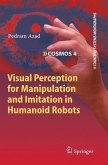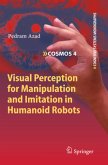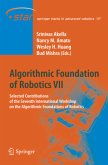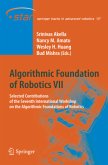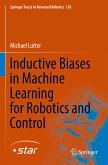Imagine robots acquiring new skills not through complex programming, but by simply observing humans. "Imitation Learning for Robots: Building a Strong Foundation" explores this exciting field, highlighting its potential for building a robust foundation for robot learning.Traditionally, robot skills relied on intricate, pre-programmed instructions. Imitation learning offers a more intuitive approach:-Watching and Doing: Robots observe human demonstrations, learning the sequence of actions and adapting them to their own capabilities.-Faster Skill Acquisition: By mimicking human actions, robots can acquire new skills with less complex programming, accelerating the training process.-Versatility for Varied Tasks: Imitation learning is adaptable to diverse tasks, from assembly line maneuvers to surgical procedures.This approach offers several advantages:-Intuitive Training: Humans can readily demonstrate desired tasks, reducing the need for complex coding knowledge.-Real-World Applicability: Learning from real-world human actions allows robots to better adapt to the complexities of their environment.-Reduced Development Time: By leveraging human demonstrations, the time required to develop robot skills is significantly reduced.However, challenges remain:-Safety Concerns: Ensuring robots safely imitate human actions requires robust safety protocols and careful selection of training demonstrations.-Skill Transfer Limitations: Robots might struggle to adapt complex human skills or actions beyond their physical capabilities.-Data Efficiency Considerations: Training robots through imitation learning can require a considerable amount of demonstration data.Despite these challenges, imitation learning holds immense potential for the future of robotics. As algorithms become more sophisticated and safety protocols are refined, we can expect robots to become adept at learning by observing, building a strong foundation for their continued development and application acrossdiverse fields.
Bitte wählen Sie Ihr Anliegen aus.
Rechnungen
Retourenschein anfordern
Bestellstatus
Storno



